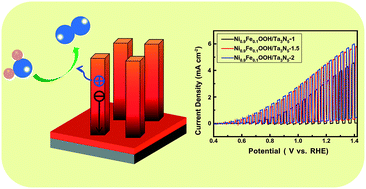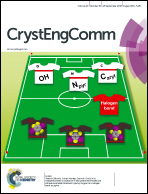Molten salt-assisted a-axis-oriented growth of Ta3N5 nanorod arrays with enhanced charge transport for efficient photoelectrochemical water oxidation†
Abstract
Efficiently harvesting light and transporting charges are the main challenges for solar water oxidation by Ta3N5 photoanodes. Herein, we discovered a facile KI molten salt route to fabricate highly oriented Ta3N5 nanorod arrays along the [100] crystallographic direction. The size of the nanorods can be finely tuned by controlling the amount of KI flux due to their bottom-up growth mechanism. The array structure enhances the light scattering, which is beneficial for harvesting more light to make up for the light absorption anisotropy of Ta3N5. The preferred [100] growth orientation guarantees electron migration to the substrate, and the enlarged space charge layer facilitates hole migration to the semiconductor–liquid interface. As a result, under AM 1.5 irradiation, the onset potential of the Ta3N5 nanorod array photoanode reaches 0.65 V versus reversible hydrogen electrode, and the current density reaches 4.65 mA cm−2. The design concept that rationally combines the advantages of charge transport and light utilization may offer a new strategy for efficient solar energy conversion.



 Please wait while we load your content...
Please wait while we load your content...